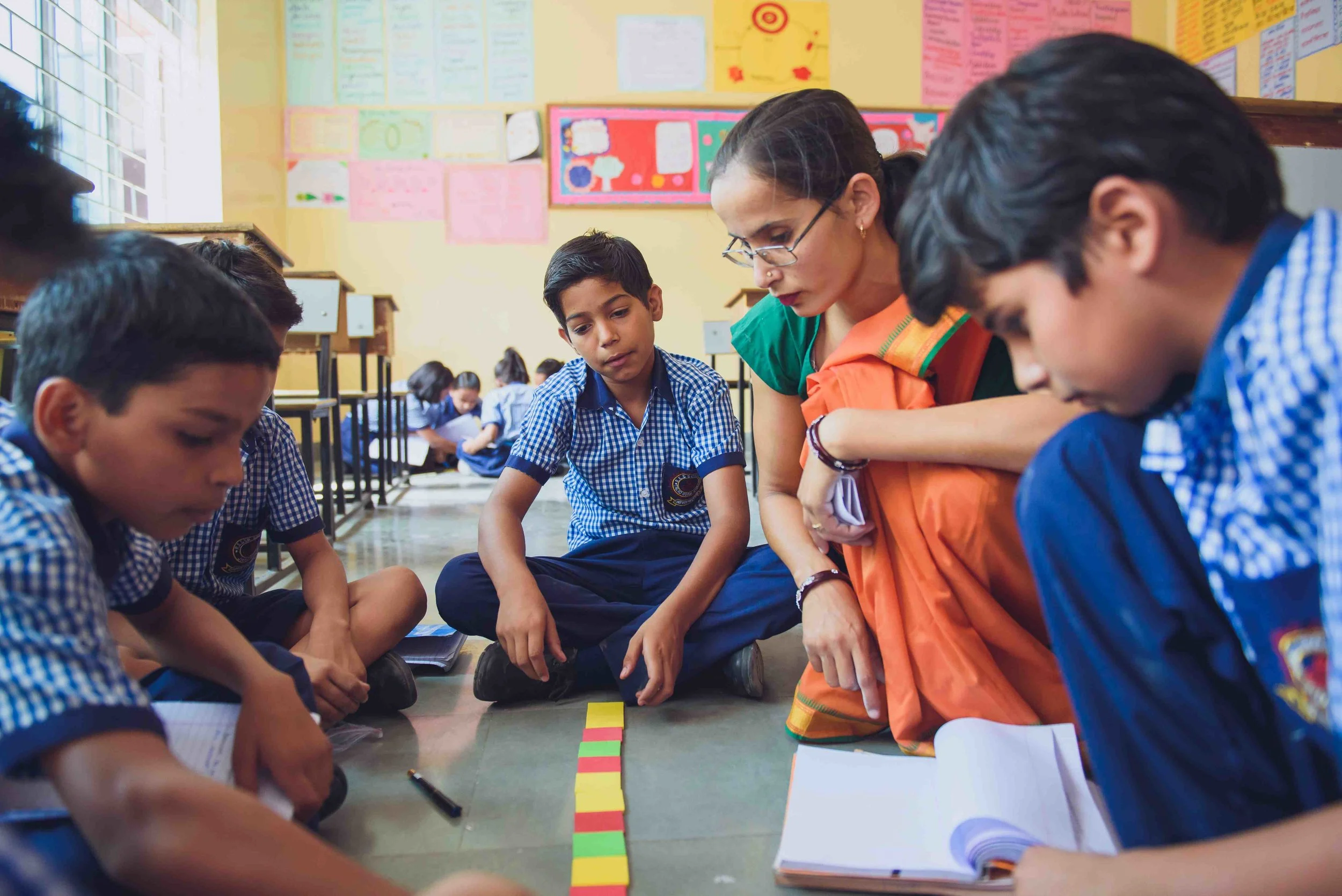This post was written by Anustup Nayak.
“What is the place value of 2 in 123?”
Gowtham, a cheerful 13-year- old who has enrolled in one of our after-school Math programs, suddenly goes quiet while his fingers slowly scan the question posed to him. “Tell me what number is this?” probes his teacher pointing to the number ‘123.' In a halting voice Gowtham finally responds, “Ma’am it’s One-Two- Three." Gowtham is already in 7th grade but cannot even recognize a 3-digit number; something he should have mastered by grade 3 or 4. I am sad but not surprised.
Gowtham is not alone. Over 200 million children go to school in India, but leave without learning much in way of understanding concepts and problem-solving skills. Every year, for the last 12 years, the Pratham (a leading Indian NGO) ASER report keeps hammering in the fact that fewer than half of lndia’s less fortunate children in government and low-income schools in grade 5 could properly read a text written for grade 2 pupils. Over the last few decades, schooling has expanded yet learning has not kept pace. Billions of dollars in expanding school infrastructure, teacher training and technology hardware has not shown much impact at scale.
So how do we create an elementary school improvement program that actually works inside the classroom, scales up to thousands of schools and is economically viable? These were the questions that bothered Ashish Rajpal (now the Founder and CEO of XSEED Education) and me when we met as classmates at the Harvard Graduate School of Education. After graduating from Harvard in 2002, we returned to India to find an answer.
After more than a decade of “pounding the pavement” inside Indian schools along with several like-minded colleagues and spending thousands of hours inside classrooms trying out various alternatives, we now have a credible answer. Headquartered in Singapore, XSEED has emerged as one of the most exciting stories in elementary school education today; visibly impacting the learning of more than 1 million children in over 3000 schools across 8 countries.
XSEED's vision is to globally transform education from rote to learning. Its revolutionary program for schools builds thinking skills and problem-solving confidence in children.
So how does XSEED make it work?
First, we put in place a well-researched five-step process that replaces “talking” with authentic teaching. XSEED takes every concept taught to children, say properties of air, and breaks it down in to five simple steps — make the objective clear to children (understand that air occupies space), conduct an hands-on activity to experience it (immerse a brick in water), questioning to grasp the concept (where do the bubbles come from?), apply this knowledge to a real-life challenge (what would happen if we burnt a candle inside a glass?), and finally assess what children learn.
Second, we provide every teacher with a comprehensive classroom toolkit that enables him or her to succeed in the classroom every day. It begins with a bank of 10,000 well researched teaching plans to uncover each concept mapped to pre-K through 8 grade state standards, followed by student learning resources which use modern texts and workbooks to extend learning to real-life problem solving and culminates with a skill-focused assessment that provides personalized feedback to every child. Year-round coaching and training situated in the classroom equips teachers with the know-how necessary to continuously uplift classroom practice.
Third, we have built a viable and scalable business model that relies on tangible demand from a growing school and parent consumer base. Schools are charged a one-time fee to license the program and parents invest annually (through the school) an affordable $20 per child for student resources. XSEED enrolls schools through a national acquisition team and retains them through a high-quality training, coaching and implementation support network. The model is now profitable and is rapidly expanding at 50% year on year.
Visible benefits of XSEED are curiosity, confidence, ability to reflect, and higher order thinking skills in children. A pilot assessment showed that XSEED children outperformed their peers in non-XSEED schools up to 20% on an average across grades and even more markedly on items that demanded mastery of higher-order inference and reasoning skills. Classroom observations indicate that teaching quality becomes more consistent with better use of hands-on activities, questioning and collaborative methods by teachers.
We have miles to go in our journey to improve learning. Our immediate goal is to reach 10,000 schools and our 5 year vision is to reach 10 million children. We will take our work to several countries, continue to innovate, and deploy technology in every part of our work. We have learnt that every child can and will learn; given the right teaching methods, sufficient time to practice and personalized feedback. We have also learnt that it is possible to bring this learning to millions of children, when we are passionate about solving this problem and persist long enough.
Three months after I first met Gowtham, I see him playing a number-line game where he successfully places himself between two other children who have a 3-digit number lower and higher than the one he has. On the way out, I meet his mother who stitches garments to support her family. She tells me, “I want to tell you that Gowtham is no more afraid of Math." It makes my day.
---
Anustup Nayak is a Vice-President at XSEED Education. Headquartered in Singapore, XSEED is an exciting education enterprise transforming learning from rote to 21st century skills using an innovative “elementary school in a box” model; impacting 1 million children in 3000+ elementary schools in 8 countries. Anustup has had a decade plus experience in school improvement including advocacy, training, assessment and educational technology. His work has been published in the Harvard Business Review Online and the MIT Journal of Innovations. Anustup holds an Ed.M from the Harvard Graduate School of Education and a M.S from the Georgia Tech School of Public Policy.

